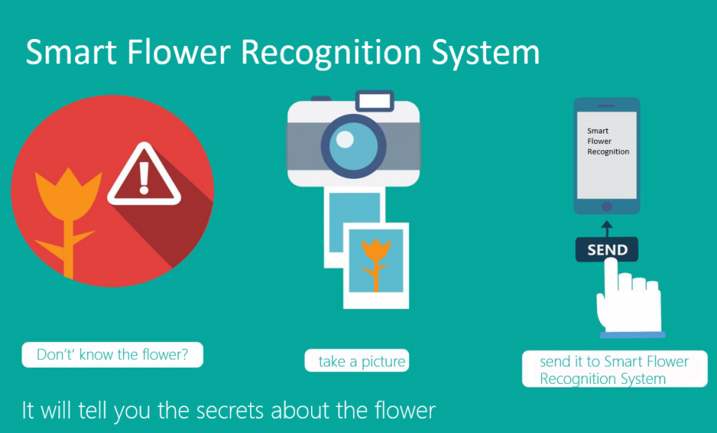| Machine Learning For Flower Recognition |
| Written by Sue Gee | |||
| Saturday, 30 July 2016 | |||
|
The image recognition technology developed by Microsoft Research has been harnessed to tackle the problem of flower identification and claims a success rate of 90%, which is almost on a par with an expert botanist. Over the past couple of years we've had fun with face-recognition apps developed by Microsoft Research for age estimation, twin identification, and emotion detection. Microsoft Research UK has also applied AI techniques of machine learning and computer vision to the domain of dogs, producing a smartphone and a browser-based app for distinguishing breeds, see What's That Dog. Given that at least 250,000 species of flowers exist, and that even experienced botanists have trouble identifying them all, this is an area that seems an ideal candidate for testing the limits of image recognition technology.
According to the Microsoft Reserch blog it was "a chance encounter" between Yong Rui, assistant managing director of Microsoft Research Asia (MSRA) and botanists at the Institute of Botany, Chinese Academy of Sciences (IBCAS) that has led to this latest initiative to build a tool capable of discerning tiny differences among the many species of flowers.
The botanists had accumulated a public store of 2.6 million images to which anyone in the world could contribute. The first task facing the MSRA team was to create algorithms to filter out the “bad” pictures. To do so they trained a deep neural network to recognize images using a set of learnable filters, which works as follows:
Inputting millions of pictures into the deep-learning framework, MSRA researchers have enabled the engine to accurately identify images more than 90 percent of the time.
If Microsoft Research does proceed to produce an automatic flower recognition app it will not be the first of its type. The Flower Checker team, whose app that we first reported last year, has recently released a plant identification bot that is integrated with Facebook and has 60% accuracy, thanks to the use of Google's Tensorflow. The bot knows about the 1024 most commonly identified taxa from the database of 150,000 plant photos accumulated by the Flower Checker iPhone/Android app which allows users to upload photos which are then identified by human botananists, a service which it still provides. Looking even further back, researchers at Columbia University, the University of Maryland and the Smithsonian Institution were the first to produce an app that applied techniques developed for face recognition to botany but chose the more limited domain of tree species for the Leafsnap app. Initially limited to trees in the Northeastern United States and Canada, there is now also a UK version, but it is still only available for iOS devices.
More InformationResearchers team up with Chinese botanists on machine learning, flower-recognition project Related ArticlesFirst iPhone field guide using visual search What's That Dog - An App For Breed Recognition Emotion Detection Using Project Oxford Conversation and Cognition at Build 2016 How Old - Fun, Wrong, Potentially Risky?
To be informed about new articles on I Programmer, sign up for our weekly newsletter, subscribe to the RSS feed and follow us on Twitter, Facebook or Linkedin.
Comments
or email your comment to: comments@i-programmer.info |
|||
| Last Updated ( Sunday, 11 June 2017 ) |





